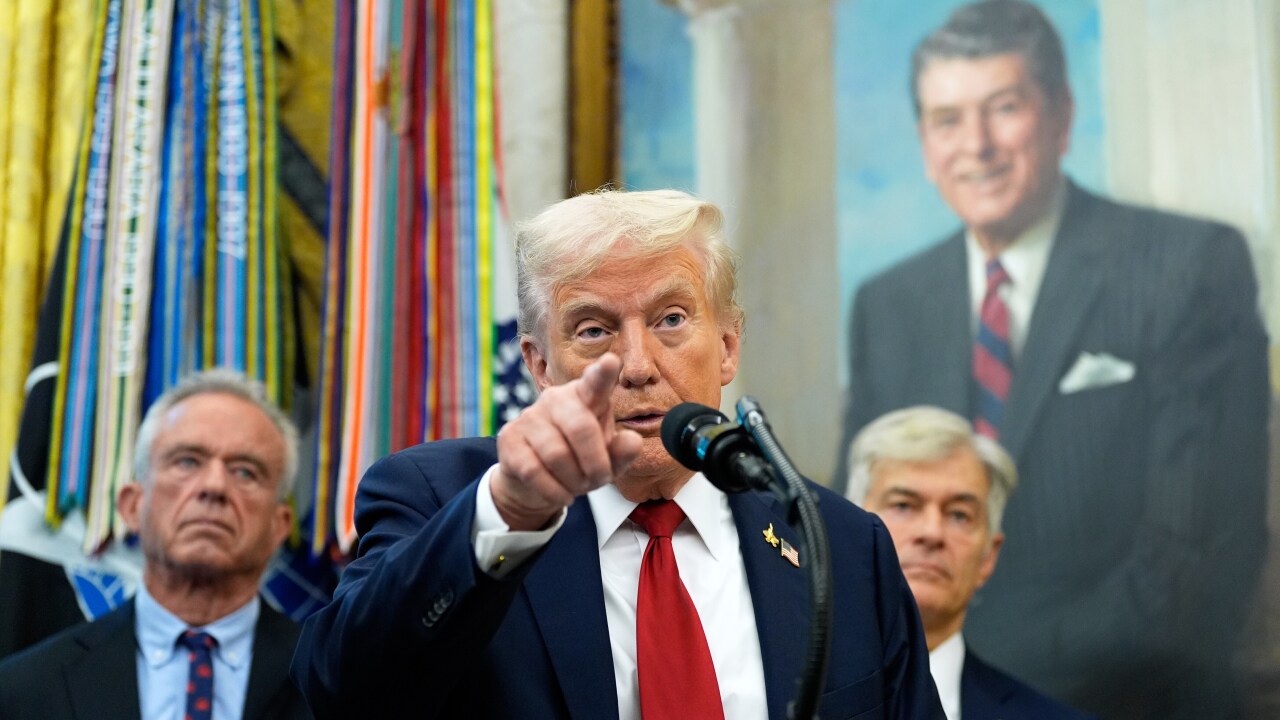The federal government shutdown entered its second day Thursday with no immediate resolution expected due to the Jewish holiday Yom Kippur, as both parties continue pointing fingers while the effects of the first shutdown in nearly seven years begin to ripple across the country.
The House is not scheduled to return to Washington until next week, and the Senate will hold no votes Thursday in observance of Yom Kippur, guaranteeing the shutdown will extend into a third day Friday.
Despite the lack of formal proceedings, conversations continue behind the scenes as senators from both parties engage in dialogue about potential paths forward. Senate cameras captured an intriguing moment Wednesday showing a bipartisan group of senators huddled together on the Senate floor, including retiring senators who may be less beholden to party lines.
Senator Ruben Gallego, a Democrat from Arizona, offered insight into early discussions among senators about finding a way to reopen the government while addressing health care concerns.
"I am in conversations with other senators and we are trying to find a way to do two things," Gallego said. "Number one, obviously open up the government, but number two, in that time period prior to November 1st, have a pathway forward to make sure that we continue the tax credits that keep premiums low, insurance premiums low, for 24 million Americans."
The political standoff remains unchanged at the leadership level. Democrats are pushing for movement on health care policy, specifically renewal of Affordable Care Act subsidies set to expire, while Republicans refuse to budge from their position.
Senate Majority Leader John Thune maintains that the only path out of the shutdown is the clean continuing resolution passed by the House, which would fund the government through late November without any health care policy changes.
RELATED STORY | Here's how the government shutdown will affect federal benefits programs
Republicans need five additional votes to reach the 60 required to reopen the government. They currently have support from three Democrats: Angus King of Maine, Catherine Cortez Masto of Nevada, and John Fetterman of Pennsylvania, bringing their total to 55 votes.
The Trump administration has introduced an unprecedented element to this shutdown by threatening permanent layoffs of federal workers, moving beyond the traditional furloughs that have characterized past government closures.
"Republicans must use this opportunity of Democrat forced closure to clear out dead wood, waste and fraud," President Donald Trump posted on Truth Social. "Billions of dollars can be saved."
White House Press Secretary Karoline Leavitt confirmed the administration's position on potential layoffs.
"Unfortunately, because the Democrats shut down the government, the president has directed his cabinet and the Office of Management and Budget is working with agencies across the board to identify where cuts can be made," Leavitt said. "And we believe that layoffs are imminent. They are unfortunately a consequence of this government shutdown."
This marks a significant departure from previous shutdowns, where federal workers were furloughed but guaranteed back pay under federal law. The threat of permanent firings represents what some are calling a potential "Doge 2.0" approach to government reduction.
Republican leadership plans to continue bringing their clean continuing resolution to the floor daily, hoping to pressure additional Democratic senators to switch their votes as constituents feel the impact of the shutdown.
RELATED STORY | From Social Security to TSA: How agencies plan to operate during a shutdown
The strategy faces the challenge of Senate Minority Leader Chuck Schumer maintaining Democratic unity around their demand for health care concessions before agreeing to reopen the government.
This story was reported on-air by a journalist and has been converted to this platform with the assistance of AI. Our editorial team verifies all reporting on all platforms for fairness and accuracy."












